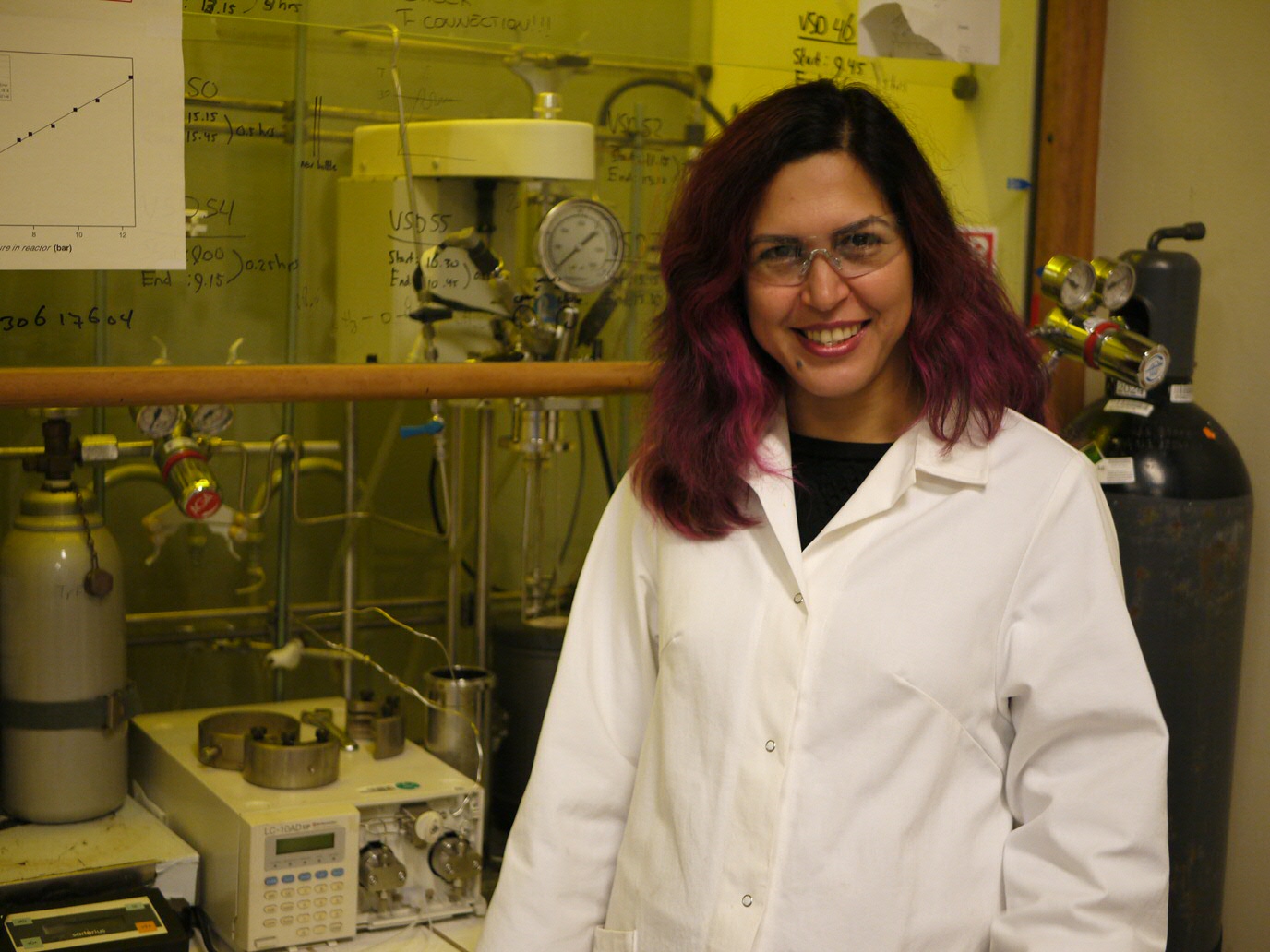Advent calendar - December 11th - Dr. Maryam Bozorg
In the Zernike Institute Advent Calendar, we are presenting 24 short spotlights in December. In these specials, we highlight PhD students, postdocs, and technicians of our research groups - providing a glimpse into their typical day at work. In Episode 11 meet Dr. Maryam Bozorg.

I am teaching fellow in the Macromolecular Chemistry and New Polymeric Materials group of Katja Loos. A teaching fellow is a special postdoc appointment which includes a larger fraction of teaching duties than a normal postdoc would do. My working day starts by bringing my baby daughter to the day care, where she plays, eats, and sleeps while I explore the world of science. I mostly work on a pressure reactor to discover new methods of synthesizing PVDF block copolymers. The VDF monomer is gaseous and therefore it is necessary to work under pressure. I often plan the reaction and characterizations well in advance to reach the highest efficiency possible in the lab and be ready to run if there might be a baby emergency.
My research is focused on the synthesis and ferroelectricity of PVDF block copolymers. Ferroelectric polymers show a spontaneous electric polarization, which is reversable by the application of an external electrical field. This makes such materials especially popular in electronic devices, sensors, membranes, and batteries. PVDF crystalizes in different phases. Excellent ferroelectricity is demonstrated by the highly polar β-phase. This crystalline phase is the most thermodynamically stable, although crystalizing from melt mostly results in the kinetically favourable α-phase which is not ferroelectric. Thus, various techniques are applied to increase the β-polymorph, including the incorporation of bulky comonomers like chlorotrifluoroethylene in PVDF chains and consequently in the crystalline structure. The problem with these fluorinated comonomers is the high risk of transportation and handling, which makes them very expensive. In my work, the incorporation of cheaper comonomers such as vinyl alcohol and their effect on ferroelectricity is examined. The challenge is, to preserve the crystalline structure, only a few percent of these comonomers should be incorporated in PVDF chain while, their reactivity is much higher than VDF monomer.
Furthermore, the polar structure of ferroelectric polymers results in dielectric losses. To overcome such drawback, block copolymerization of VDF is applied, which results in a remarkable improvement in ferroelectricity. Due to the ability of block copolymers to self-assemble in different morphologies, block copolymerization offers a strong tool to alter the electrical properties. In my research, block copolymerization of PVDF with different second blocks is investigated alongside the ferroelectricity of the copolymers.
I am also very interested in new sustainable techniques of polymer synthesis. Therefore, the application of enzymatic polymerization for the synthesis of PVDF block copolymers is investigated to pave another step towards green chemistry and a more sustainable future.
Contact: Dr. Maryam Bozorg
| Last modified: | 07 June 2024 2.26 p.m. |
More news
-
24 March 2025
UG 28th in World's Most International Universities 2025 rankings
The University of Groningen has been ranked 28th in the World's Most International Universities 2025 by Times Higher Education. With this, the UG leaves behind institutions such as MIT and Harvard. The 28th place marks an increase of five places: in...
-
05 March 2025
Women in Science
The UG celebrates International Women’s Day with a special photo series: Women in Science.
-
16 December 2024
Jouke de Vries: ‘The University will have to be flexible’
2024 was a festive year for the University of Groningen. In this podcast, Jouke de Vries, the chair of the Executive Board, looks back.
